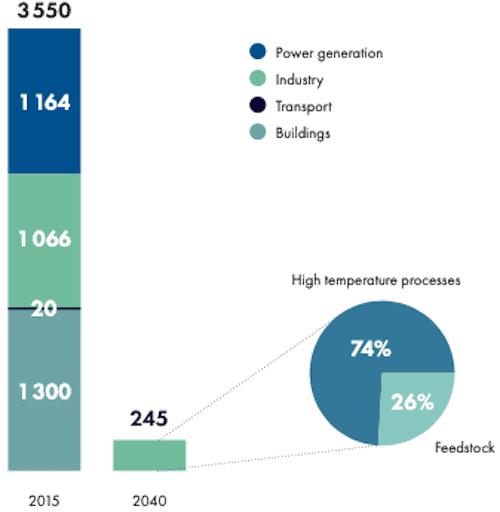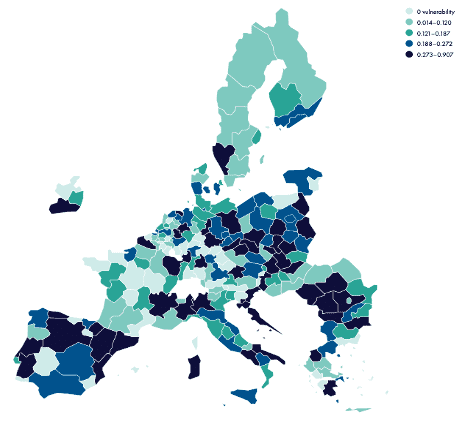As the world grapples with unprecedented heatwaves, floods and wildfires, the urgency and benefits of climate action are once again in the spotlight. The European Green Deal is helping to reduce greenhouse-gas emissions. But not only that. The climate laws can provide effective solutions to reduce demand for gas, oil and coal, improve energy security, lower household energy bills and help businesses regain competitiveness.
To solidify the net-zero transition, companies however need long-term certainty. Industries work with investment cycles which require companies to plan 10-15 years ahead. If Europe wants to be more energy-secure and more resilient to global supply-chain disruptions while modernising its industrial base, there is no time to waste. European Union leaders must make strategic choices now.
They have three critical choices to make. Will the EU remain dependent on fossil-fuel imports or drive the electrification of its economy, based on renewables? Will the bloc remain vulnerable to supply-chain shocks or promote circularity and green products? And will China and the United States dominate the clean-technology sector or will Europe seize the opportunity rapidly to expand manufacturing with net-zero technology?
As outlined in the Strategic Perspectives report Choices for a More Strategic Europe, we need a clear, long-term vision that guides short-term political actions in favour of the net-zero transition. A new climate target of a 90 per cent net emissions reduction by 2040 would set the right framework to help leaders make these choices.
Building energy security
In the face of the energy crisis, EU leaders flocked to secure gas supplies and signed deals with new countries, seeking quickly to reduce their dependence on Russia. Unfortunately, this is just a short-term solution which has left Europe equally vulnerable to international energy markets.
A new European energy-security architecture is possible. It can be based on the electrification of the economy, a zero-emissions electricity system by 2037 and energy savings. Modelling by Strategic Perspectives shows that more than half of the heating and industrial sectors and 86 per cent of the car fleet can be electrified by 2040. To get there, we need a clear commitment to phase out gas and coal in power generation (Figure 1).
Figure 1: fossil gas demand per sector (terawatt hours)

The analysis projects an increase in electricity demand by 2040 met through a robust deployment of renewables, especially wind and solar. The good news is that this is already happening: sales of heat pumps and electric vehicles are increasing quickly, solar installations reached a record 40 gigawatts in 2022 and plans to expand offshore are encouraging. On top of that, we can expect energy savings to moderate overall electricity demand, through building renovation, more public transport and more efficient electrical equipment.
Modernising industry
European industry is in a critical situation. Many companies have lowered or shut down production due to energy-price volatility and shocks in global supply chains. Electrification and circularity are the best answers to this problem.
Modernisation will not only drastically reduce emissions but also give EU industry a competitive edge, driving innovation and access to new markets. Industrial electrification and the use of heat pumps will help companies reduce their reliance on gas. Widespread recycling of materials such as steel, paper and glass could reduce reliance on imported raw materials.
Industrial transformation and investment cycles take time and clear guidance is needed. So planning for decarbonisation must start now, yet EU leaders lack a clear vision on industry.
Companies rely on policy-makers to put in place an enabling framework, supplying the reassurance that demand for green products will be there. The European carbon market cannot deliver the modernisation European industry needs or create lead markets for green products. Without a clear vision, the continent will be at the mercy of external shocks and supply-chain constraints.
Leaders do have valuable tools at hand. EU industries would benefit from quotas for a share of green steel in EU-made wind turbines and electric cars, public-procurement policies that favour green products and a fit-for-purpose investment scheme.
Reindustrialising Europe
Reaching the EU’s climate targets risks increasing imports from China—and dependence upon it. This exposes the EU to supply risks, bottlenecks or even disruptions.
Investing in factories producing lithium-ion batteries, wind turbines, electrolysers and solar panels in Europe will contribute to securing the deployment of domestically produced technologies at the necessary pace. Industrialisation also represents a significant opportunity for EU companies to drive innovation in net-zero technology markets.
Supporting the installation of manufacturing capacities in regions that are and will be affected (Figure 2) by multiple structural changes—such as the decline of coalmining and the evolution of steel production and car manufacturing—will be critical to ensure all regions benefit from net-zero reindustrialisation. Industrialisation has the potential to create quality jobs and strengthen European cohesion, making the transition fairer for all.
Figure 2: regions likely to be affected by a transition risk as they concentrate vulnerabilities (declining industry, limited connections, high unemployment etc)

Distributing benefits
Besides these three strategic choices, one of the key conditions for the success of the net-zero transition is ensuring that low- and middle-income households have access to environmental solutions. The upfront investment for climate-friendly equipment is often too high for most citizens, especially in a cost-of-living crisis. If heat pumps, electric cars or home renovations remain too expensive, low- and middle-income households will not have access to them, still exposed to high and volatile gas and oil prices.
The European Social Climate Fund has paved the way for more targeted climate policies. It will be crucial to maintain and strengthen it to ensure that the benefits of the net-zero transition are well distributed across society. Some EU member states, such as Ireland and the Czech Republic, cover the whole cost of renovating buildings for the most vulnerable households. In France, the government is working on a social leasing scheme for electric cars, targeting households that cannot afford a car but really need one. Making the transition affordable is a must.
It is time for EU leaders to shape a genuine industrial strategy for Europe that defines its employment structure, competitiveness and position in global markets. More than just a climate policy, the net-zero transition is an asset for building a new energy-security architecture and a more competitive and resilient industry. The 2040 climate target is the right framework to open this debate and to make the strategic choices that will take the EU into the next decade.


